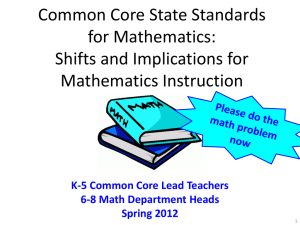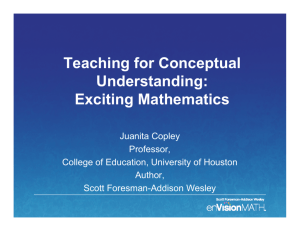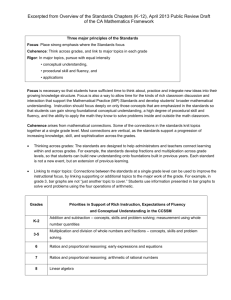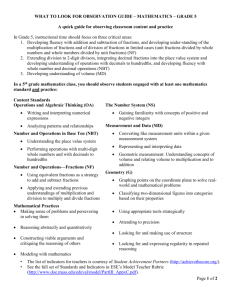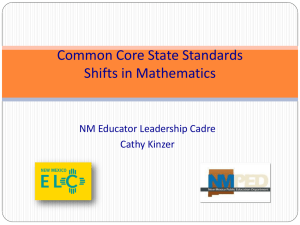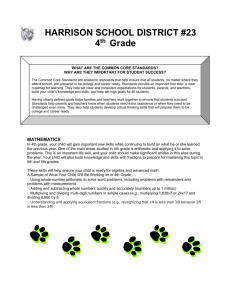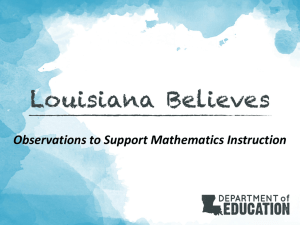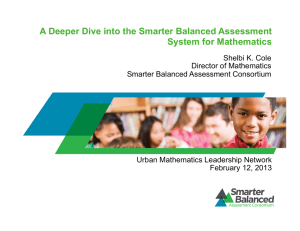Focus, Coherence, and Rigor in McGraw
advertisement
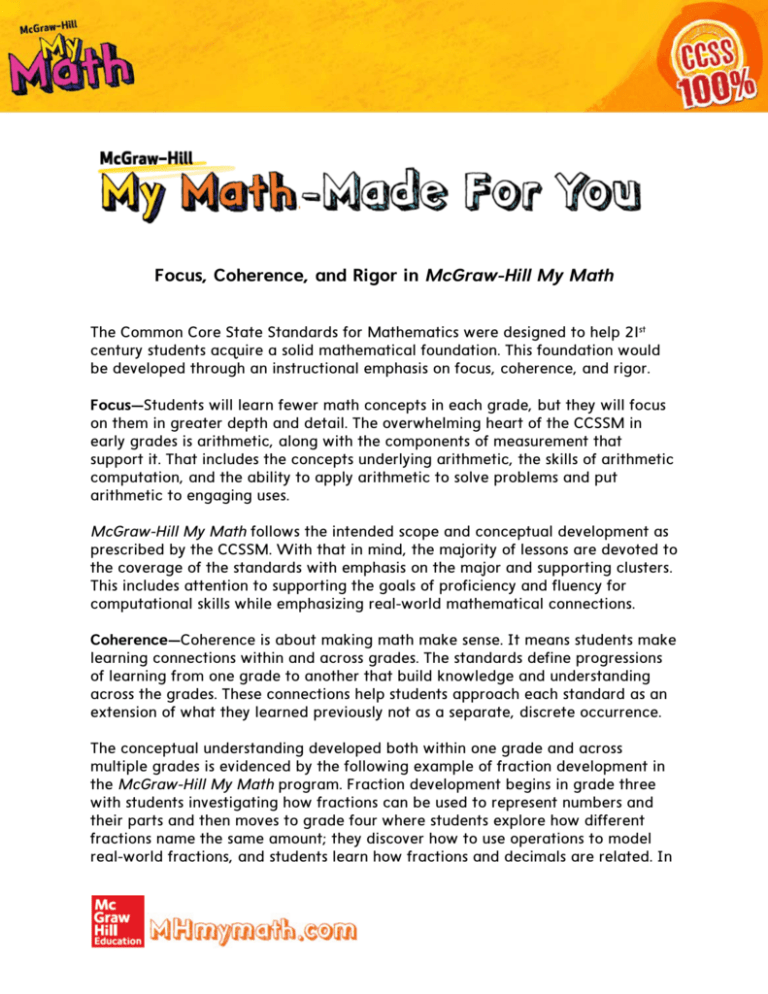
Focus, Coherence, and Rigor in McGraw-Hill My Math The Common Core State Standards for Mathematics were designed to help 21st century students acquire a solid mathematical foundation. This foundation would be developed through an instructional emphasis on focus, coherence, and rigor. Focus—Students will learn fewer math concepts in each grade, but they will focus on them in greater depth and detail. The overwhelming heart of the CCSSM in early grades is arithmetic, along with the components of measurement that support it. That includes the concepts underlying arithmetic, the skills of arithmetic computation, and the ability to apply arithmetic to solve problems and put arithmetic to engaging uses. McGraw-Hill My Math follows the intended scope and conceptual development as prescribed by the CCSSM. With that in mind, the majority of lessons are devoted to the coverage of the standards with emphasis on the major and supporting clusters. This includes attention to supporting the goals of proficiency and fluency for computational skills while emphasizing real-world mathematical connections. Coherence—Coherence is about making math make sense. It means students make learning connections within and across grades. The standards define progressions of learning from one grade to another that build knowledge and understanding across the grades. These connections help students approach each standard as an extension of what they learned previously not as a separate, discrete occurrence. The conceptual understanding developed both within one grade and across multiple grades is evidenced by the following example of fraction development in the McGraw-Hill My Math program. Fraction development begins in grade three with students investigating how fractions can be used to represent numbers and their parts and then moves to grade four where students explore how different fractions name the same amount; they discover how to use operations to model real-world fractions, and students learn how fractions and decimals are related. In grade five students use factors and multiples to solve problems; use equivalent fractions to add and subtract fractions; and they multiply and divide fractions. Rigor—To help students meet the expectations of the CCSSM, educators need to pursue with equal intensity three aspects of rigor in the major work of each grade: conceptual understanding, procedural skill and fluency, and application. Conceptual Understanding: Students need to demonstrate solid conceptual understanding of core mathematical concepts. They need to be able to confidently and effectively maneuver within a math concept. They need to view mathematics as more than a set of rules or steps to follow to get the right answer. Procedural Skill and Fluency: Students must develop fluency in core functions, such as addition, subtraction, multiplication, and division, so they are able to understand and manipulate more complex concepts. Procedural and computational fluencies imply accuracy with reasonable speed and refer to knowledge of procedures, when and how to use procedures appropriately, and skill and confidence in performing them accurately and efficiently. Application: Students are expected to use mathematics and choose the appropriate concepts for application. They need to apply mathematical concepts in real-world situations. Applications can be motivational and interesting, and there is a need for students at all levels to connect the mathematics they are learning to the world around them. McGraw-Hill My Math supports a balance among the development of conceptual understandings, the need for instilling fluency and proficiency, and the desire to make mathematics rich and meaningful to every student. The overarching ‘Essential Question’ in each chapter links learning across the lessons. Games and activities designed to build computational efficiency as well as online digital resources make use of practice routines to promote the automaticity of computational facts as well as reasoning skills. Students are involved in the application of lesson concepts as they engage in contextual problem-solving scenarios.
